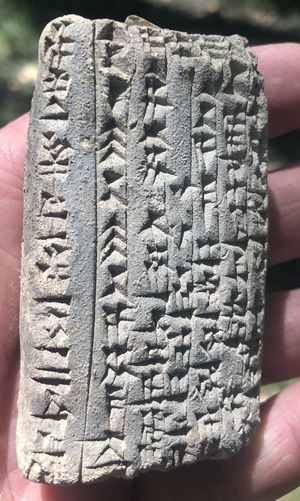 |
1700-1500 BC
Ceramic Cuneiform Tablet Babylonian Administrative document granting land to six men. Their professions are listed. The land is described and was likely rewarded to the men for service to the king.
< Front
Reverse > |
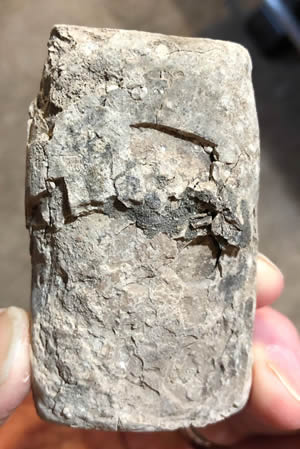 |
 |
1700-1500 BC
Ceramic Cuneiform Tablet Babylonian Administrative document granting land to six men. Their professions are listed. The land is described and was likely rewarded to the men for service to the king. |
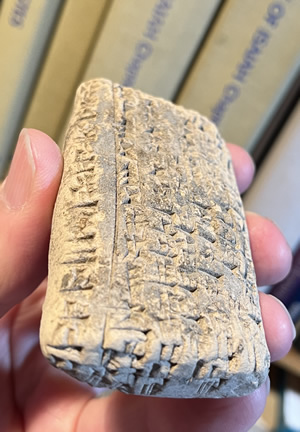 |
 |
1500 BC
Clay Juglet
with black varnish used for ointment |
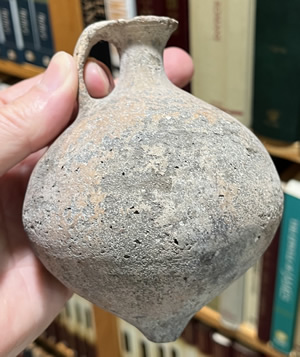 |
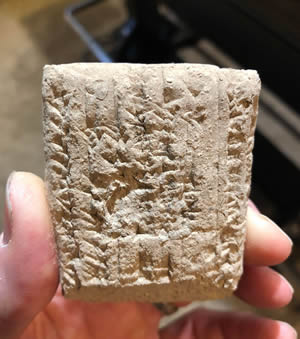 |
1400-1200 BC
Kassite or Persian Cuneiform Tablet
<Eight columns of cuneiform text on the obverse
Six lines of text on the reverse >
|
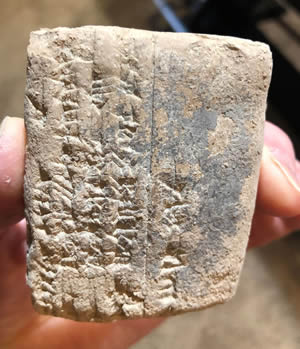 |
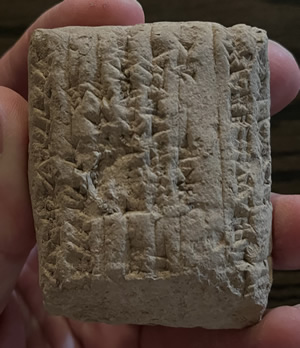 |
1400-1200 BC
Kassite or Persian Cuneiform Tablet
<Eight columns of cuneiform text on the obverse
Text is inscribed on one side to serve
as a title when placed on a shelf with
other cuneiform documents. >
|
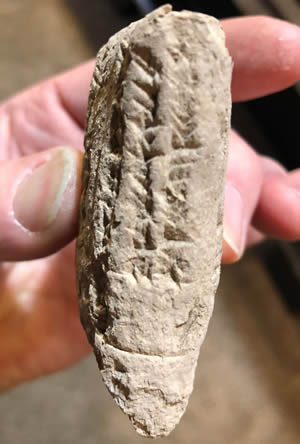 |
 |
|
|
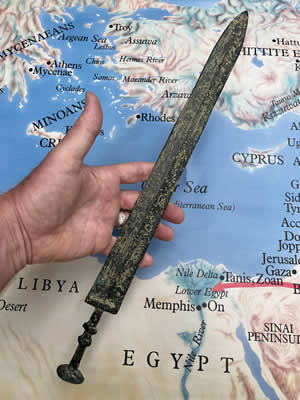 |
1600-1000 BC
Bronze Sword
< side one
side two >
|
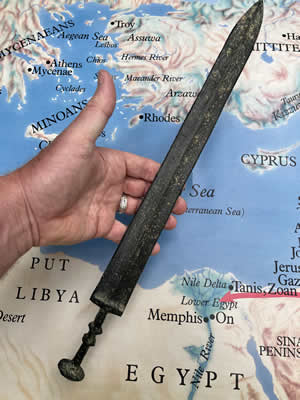 |
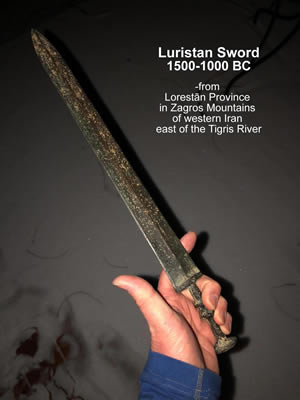 |
1600-1000 BC
Bronze Sword
|
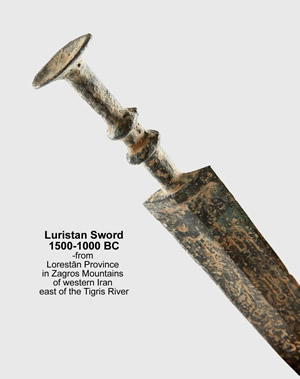 |
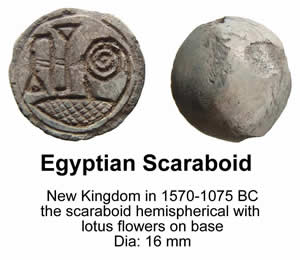 |
1570-1075 BC
Egyptian Scaraboid with Lotus Flowers
|
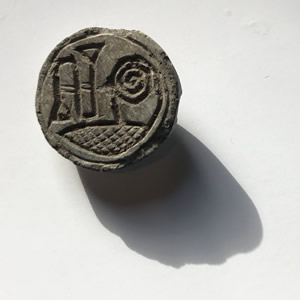 |
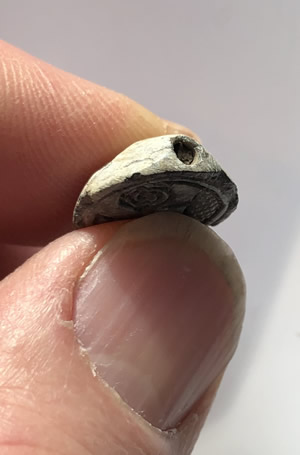 |
1570-1075 BC
Egyptian Scaraboid with Lotus Flowers
< Suspension Hole
Back of the Scaraboid >
|
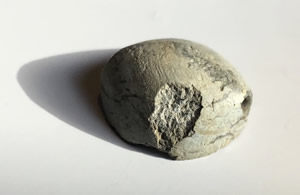
|
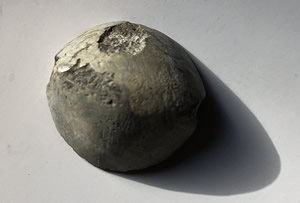 |
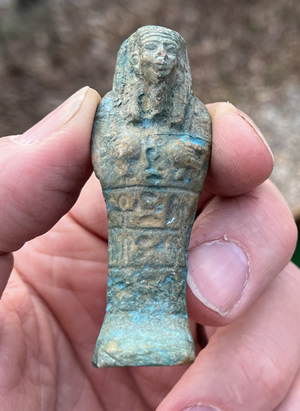 |
Turquoise blue glazed pottery
faience Ushabti figure from Egypt with hieroglyphic panels on the front.
Ushabtis like this one were placed in tombs and were to act as servants for the deceased. The figurines often were formed with a hoe on their shoulder and a basket on their backs so they were ready to do field work and farm for the deceased.
|
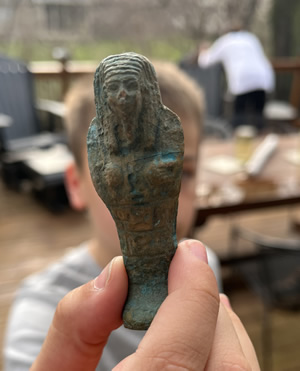 |
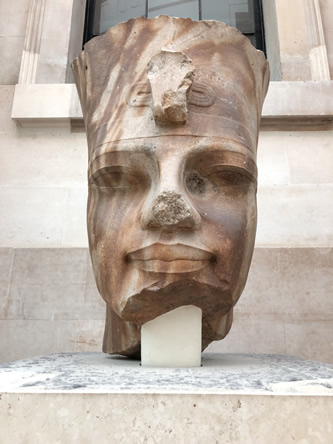 |
Amenhotep III (1390-1352) received the Amarna Letters from Canaanites leaders asking for help against invaders in the land of Canaan |
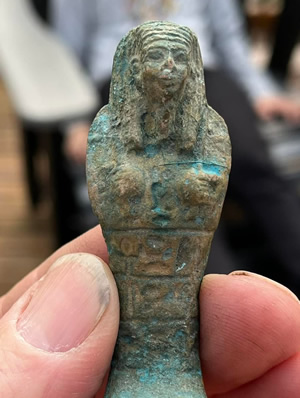 |
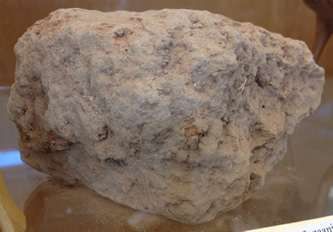 |
1400 BC
< Clay brick from Jericho
Remains of the retaining wall at Jericho that supported the mud brick wall that collapsed. Portions of the residential mud brick walls remain built perpendicular against the stone retaining wall at Jericho. > |
 |
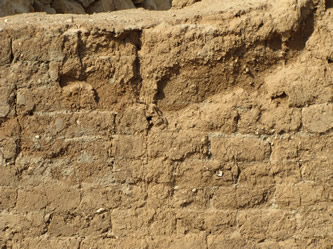 |
< Mud bricks at Jericho
Residential wall made of mud/clay bricks built against the retaining wall that supported the terrace and served as a base for wall that fell in Jericho. > |
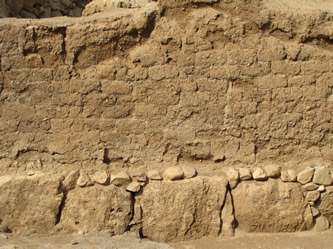 |
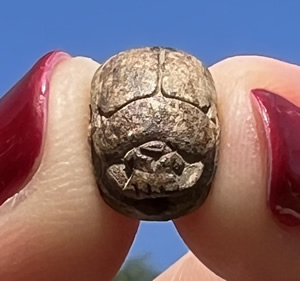 |
1570-1075 BC
Egyptian Scarab
This Scarab (or, Seal) was used to press a personal impression that showed two crocodiles head to tail.
A Scarab is a beetle shaped seal with a suspension hole used to attach to a ring.
The stone could rotate to be worn to show the beetle image, but then removed to rotate the image to press a personal symbol into clay or wax.
|
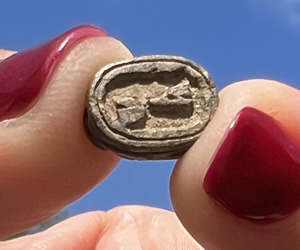 |
 |
1570-1075 BC
Egyptian Scarab
< Suspension hole from the back of beetle.
This side view show the beetles wings
and legs >
|
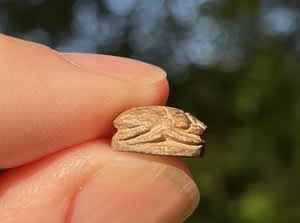 |
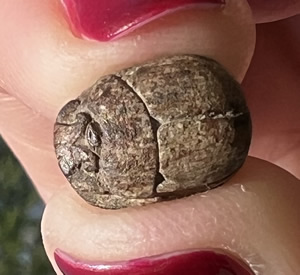 |
1570-1075 BC
Egyptian Scarab
< Top view of the beetle wings and head.
Side view of the scarab showing impression on bottom and the beetle legs on side >
|
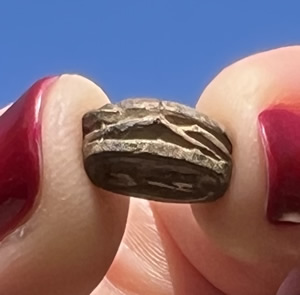 |
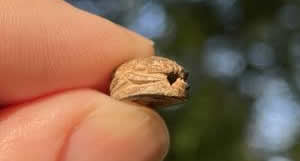 |
1570-1075 BC
Egyptian Scarab
< Suspension hole from the mouth.
|
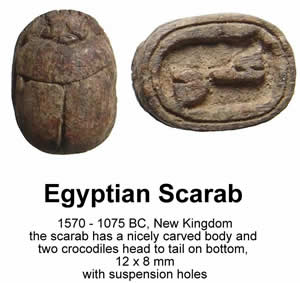 |
| |
|
|
Photos were taken by Galyn Wiemers of
Generation Word Bible Teaching Ministry
of images on location in Israel or
on display in public museums or
from Galyn's personal collection.
All images may be downloaded,
published, uploaded or freely used for further study and Bible teaching. |
For Bible teaching audio, video, notes and study tools visit Generation Word's home page at www.generationword.com

|
|

